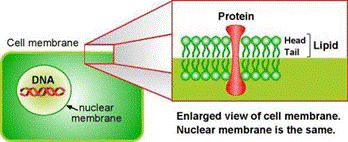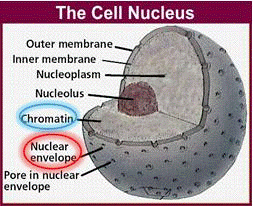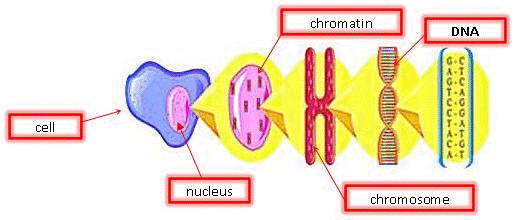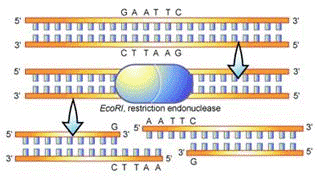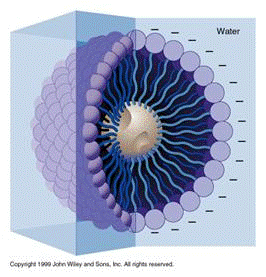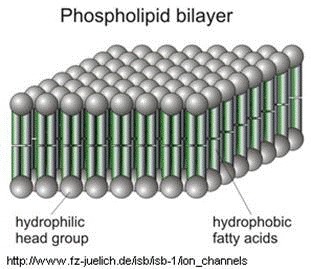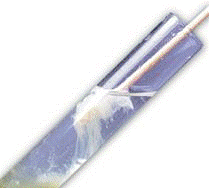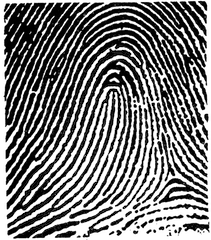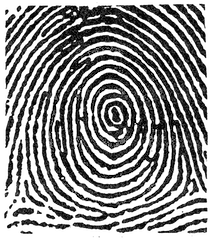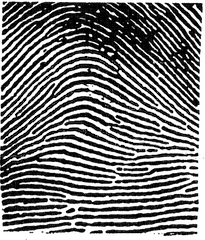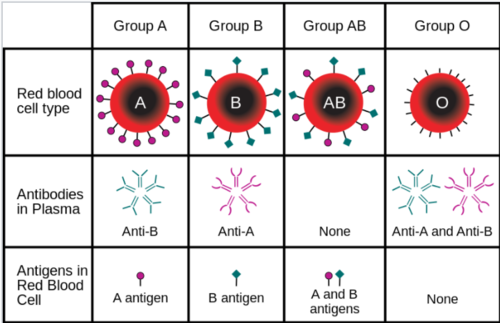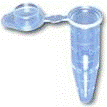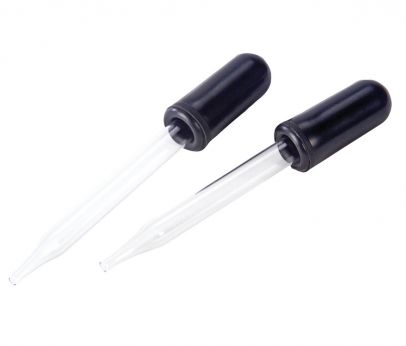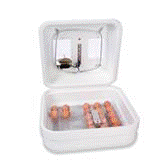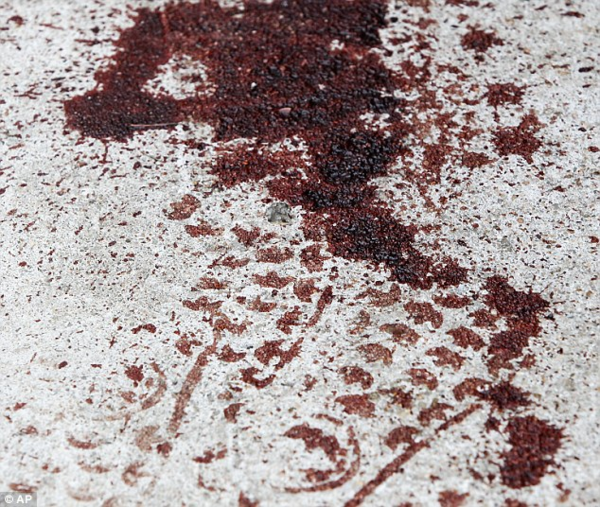Difference between revisions of "Biomedical Forensics"
m (→Blood Typing) |
m (→Blood Typing) |
||
| Line 69: | Line 69: | ||
Even though all red blood cells are made of similar elements, not all blood cells are alike. There are eight different types of blood, each based on the presence or an absence of three types of <b>antigens</b> (A, B, and Rh) (Figure 11). Antigens in general induce an immune response to foreign substances in the body. The A and B antigens determine the type of blood while the Rh antigen determines if the blood is positive or negative with the Rhesus factor, which is associated with hemolytic diseases and incompatible blood transfusions. | Even though all red blood cells are made of similar elements, not all blood cells are alike. There are eight different types of blood, each based on the presence or an absence of three types of <b>antigens</b> (A, B, and Rh) (Figure 11). Antigens in general induce an immune response to foreign substances in the body. The A and B antigens determine the type of blood while the Rh antigen determines if the blood is positive or negative with the Rhesus factor, which is associated with hemolytic diseases and incompatible blood transfusions. | ||
*The ABO Blood Group System | |||
*Group A has only the A antigen on red cells | **Group A has only the A antigen on red cells | ||
*Group B has only the B antigen on red cells | **Group B has only the B antigen on red cells | ||
*Group AB has both A and B antigens on red cells | **Group AB has both A and B antigens on red cells | ||
*Group O has neither A nor B antigens on red cells | **Group O has neither A nor B antigens on red cells | ||
Positive (+) blood types have the Rh factor and negative (-) blood types do not have the Rh factor. | Positive (+) blood types have the Rh factor and negative (-) blood types do not have the Rh factor. | ||
Revision as of 00:42, 25 March 2020
Objective
The objective of this experiment is to use biomedical forensic techniques, including extracting DNA, fingerprinting, identifying foreign substances, and performing blood typing, to investigate a crime scene. The DNA will be extracted using the basic biochemical techniques for isolating, purifying, and digesting DNA molecules. The drug testing will be completed by observing chemical reactions using simulated reagents. A blood typing simulation kit will be used for the blood tests.
Overview
Most people learn about biomedical forensics from TV shows that, in fact, misrepresent this branch of science. It is true that biomedical forensic methods are commonly used in criminal or civil cases, but some of these techniques also have applications in medicine in the diagnosis and treatment of diseases and injuries, in product safety and analyzing how and why products and systems affect users, and other engineering fields. In criminal law, these techniques are used to identify suspects in criminal cases and to exclude individuals as suspects. DNA testing, in particular, is increasingly used to prove the innocence of people who have been wrongfully convicted of a crime.
The Structure of DNA
Deoxyribonucleic acid (DNA) is found in almost all living organisms. These organisms can be as simple as single-celled bacteria or as complex as a multi-celled human; the human body contains approximately 50 trillion cells. There are two different types of cells: prokaryotes and eukaryotes. Prokaryotic cells do not have a nuclear membrane and so do not have a distinct nucleus. An example of a prokaryotic organism is bacteria. Only eukaryotic cells, which are found in plants and animals, will be considered in this lab. Eukaryotic cells have a distinct, membrane-bound nucleus that isolates the DNA from the rest of the cell. The structure of plant cells is different from those of animal cells in structure and cellular contents. Only plant cells will be used in this experiment.
Plant cells are surrounded by a cell wall that has high mechanical strength and protects the cell. Directly beneath the cell wall lies the plasma membrane (Figure 1), that separates the interior of the cell from the outside environment. Within the plasma membrane is the cytosol.
The various cell organelles that perform specialized functions for the cell, including the nucleus, are found within the cytosol. The nucleus (Figure 2) houses DNA in the form of chromatin, which is the building block for chromosomes.
Chromatin is the active form of DNA in the cell when it is not preparing for cell division. It is comprised of DNA wrapped around protein particles called histones, which help pack and order the DNA into structural units (Figure 3).
The DNA molecule is a double-helical polymer consisting of a sugar-phosphate backbone with nitrogenous bases running perpendicular to the backbone. These bases, often represented by letters – A (adenine), G (guanine), C (cytosine), and T (thymine) – are the elementary components making up coded genetic information (Figure 4). The base sequence acts as the instruction manual to the cell, directing it on how to make proteins and other important molecules that an organism needs to survive and function.
DNA Extraction
A process that will be used in this experiment is to extract the DNA from a fruit sample. Some knowledge of DNA extraction is needed to do this. The DNA extraction process is a fairly simple biochemical procedure that can be divided into three major steps: breaking open the cell wall, destroying membranes within the cell, and precipitating the DNA out of the solution.
The first step in DNA extraction is to break the cell wall (cell lysis) in order to expose the DNA within the cell. Plant cells have a very rigid external structure — the cell wall — that protects the intercellular components. It is very rigid and acts as a protector and filter for substances moving in and out of the cell. It is made of cellulose, which is the insoluble substance that makes wood hard and durable. To destroy the cell wall, a mechanical method is used to break apart the cellulose molecules. In this experiment, the fruit sample will be mashed manually.
The second step in DNA extraction is to destroy the plasma membrane within the cell. The cell's plasma membrane is made of phospholipid bilayers that are made of fat. To disrupt them, the mesh of fat molecules is broken up with a surfactant (soap). The structure of soap is very similar to the structure of fat and grease, and lowers the surface tension between two fluids when acting as a surfactant.
A soap molecule has two parts: a head and a tail. The head is polar and is attracted to water (hydrophilic), while the tail is non-polar and attracted to oil and fat (hydrophobic). When soap molecules are in water, they group themselves into micelles that have a roughly spherical structure in which all the polar heads point outwards (toward water) and all the non-polar tails point inwards at the center of the sphere (away from the water) (Figure 5).
The soap molecules effectively trap the fat molecule inside the micelle and dissolve the cell membranes. The molecules in the phospholipid bilayer (Figure 6) also contain molecules that are made up of a hydrophilic head and a hydrophobic tail. The soap molecules orient themselves so that their head associates with the tail of the phospholipid bilayer. In this way, the soap breaks up the bilayer molecule by molecule.
The last step in DNA extraction is precipitating the DNA. When the plasma membrane is successfully disrupted, the DNA is released from the cells into the solution along with protein molecules and other cellular miscellany (Figure 6). With the cell's contents mixed into a solution, the DNA can be separated from the rest of the contents. This process is called precipitation. Salt is used because it disrupts the structure of the proteins and carbohydrates found in the solution. Also, the salt provides a favorable environment to extract the DNA by contributing positively charged sodium ions that neutralize the negative charge of DNA.
After the addition of salt and soap, the extracted DNA cannot be seen as it is too small to distinguish from the rest of the solution. To aid in precipitating the DNA to a visible state, alcohol is added since it cannot dissolve the DNA. A translucent white substance will begin to form at the top: this is the DNA (Figure 7). Once the precipitate is thick enough, it can be spooled out. This simple procedure is a rough extraction process that needs further purification before it can be successfully run on a gel for analysis.
Fingerprints
Fingerprints are unique patterns consisting of friction ridges (raised) and furrows (recessed) that appear on the pads of the fingers and thumbs, and are often used for identification purposes in forensics. Prints from palms, toes, and feet are also unique, but these are used less often for identification so this guide focuses on prints from the fingers and thumbs.
The fingerprint pattern, such as the print left when an inked finger is pressed onto paper, is made from the friction ridges on that particular finger. Friction ridge patterns are grouped into three distinct types—loops, whorls, and arches—each with unique variations, depending on the shape and relationship of the ridges.
Loops are prints that recurve back on themselves to form a loop shape (Figure 8). Divided into radial loops (pointing toward the radius bone, or thumb) and ulnar loops (pointing toward the ulna bone, or pinky), loops account for approximately 60 percent of pattern types.
Whorls form circular or spiral patterns, like tiny whirlpools (Figure 9). There are four groups of whorls: plain (concentric circles), central pocket loop (a loop with a whorl at the end), double loop (two loops that create an S-like pattern) and accidental loop (irregularly shaped). Whorls make up about 35 percent of pattern types.
Arches create a wave-like pattern and include plain arches and tented arches (Figure 10). Tented arches rise to a sharper point than plain arches. Arches make up about five percent of all pattern types.
Blood Typing
Even though all red blood cells are made of similar elements, not all blood cells are alike. There are eight different types of blood, each based on the presence or an absence of three types of antigens (A, B, and Rh) (Figure 11). Antigens in general induce an immune response to foreign substances in the body. The A and B antigens determine the type of blood while the Rh antigen determines if the blood is positive or negative with the Rhesus factor, which is associated with hemolytic diseases and incompatible blood transfusions.
- The ABO Blood Group System
- Group A has only the A antigen on red cells
- Group B has only the B antigen on red cells
- Group AB has both A and B antigens on red cells
- Group O has neither A nor B antigens on red cells
Positive (+) blood types have the Rh factor and negative (-) blood types do not have the Rh factor.
Materials and Equipment
- Fruit sample
- Non-iodized table salt (NaCl)
- Hand soap (clear, unscented)
- 95% isopropyl alcohol (0 °C)
- Distilled water
- Strainer
- Plastic cups
- Ziploc bag
- Iron Magic Wand
- Iron powder
- Blood typing kit
- White Paper
- String
- Meter stick
Procedure
Forensic Academy
Before you can go out into the field and investigate your first crime, you must first go through basic training to become an official EG forensic scientist. In this time, three tests will be done to enhance your knowledge of the forensic science and how the modern forensic scientist would start an investigation.
Part 1: DNA Extraction
- Add 2 tsp (10ml) dish soap to the water.
- Stir in a ¼-tsp salt and mix until the salt dissolves. This is the extraction mixture.
- Place one strawberry into a plastic zipper-lock bag.
- Pour the extraction mixture into the bag with the strawberry.
- Remove as much air from the bag as possible and seal it closed.
- Use your hands and fingers to mash the strawberry inside of the bag. You don’t want any large pieces remaining.
- Pour the resulting strawberry pulp and extraction mixture through a strainer and into a beaker.
- Use a spoon to press the mashed bits of strawberry against the strainer forcing even more of the mixture into the container.
- From the container it’s in now, pour the extraction mixture into a smaller beaker or cup. This is not a necessary step but it will help to isolate the DNA on the surface of the mixture.
- Add 1 tsp (5 ml) of the chilled isopropyl alcohol to the solution and hold the mixture at eye level. You’re looking for a separation of material that shows up as a white layer on top. That’s the DNA of the strawberry!
- If the separation of DNA is not seen immediately set the small container aside for a few minutes and move on, but don't forget to look back later to see the separation!
Part 2: Fingerprinting
- Obtain a clean piece of Plexiglass and thoroughly clean it with a baby wipe.
- Apply your thumb onto the glass, and put pressure onto the glass, while holding the glass by its edges.
- Keep applying pressure for a few seconds.
- Once the time is up, hold the glass against the light to view the imprint and is it if it came out clearly. If not, clean the glass and redo the process.
- Take the fingerprint powder and spread a generous amount in the region of the imprint.
- Take the magic wand (it's magnetic) and slowly lift the top to extract the excess iron filament from the glass panel.
- Place the excess back into the black powder container and seal the container.
- Closely observe the remaining fingerprint and identify which type of fingerprint type it is.
Part 3: Drug Testing
- Obtain lab samples of the suspect drug.
- Separate the drug sample into 5 test tubes, label each test tube A, B, C, D, and E.
- Obtain the 5 drug identifiers from the TAs. Identifiers tests for the following drugs:
- Cannabis
- Heroin
- MDMA (Ecstasy)
- Cocaine
- Lysergic Acid Diethylamide (LSD)
- Take all the A-labelled test tubes with the drug sample and place 5 droplets of the Cannabis.
- Stir/Shake the test tube for 30 seconds.
- Observe each test tube. If the drug indicator has caused a reaction, the powder contains that drug.
- Repeat Step 4-6 for each of the identifiers (Test Tube B-Heroin, Test Tube C-MDMA, Test Tube D- Cocaine, Test Tube E-LSD).
Congratulations, you have now completed the Forensic Academy and now are certified to fight crime in the greater EG area!
Crime Scene
It was a warm and stormy night on July 23rd, 2017. The EG office was quiet as one TA was pulling a late night shift to prepare the classroom for the next morning’s lab. There was a loud crash in the background. The room went dark. The next morning, there was police tape engulfing the entire room. Someone had murdered Roy, and now it is up to you to find his killer.
At the crime scene, police discovered a pool of blood, along with the suspected murder weapon — a hammer — near the body. They have narrowed down the suspects to the 26 people who had access to the office that late at night.
Here is an Excel Document of the basic information of the suspects.
It is up to you to find the killer before this case gets cold, and the murderer gets away.
Part 1: Biological Dimensional Analysis
- Obtain a measuring stick and measure the length of your foot.
- Next measure the length of your arm span from fingertip to fingertip (This is about the measurement of your height)
- Repeat steps for each member in group.
- Compare the ratios of each body part ratios within the group, and determine the average foot to arm length ratio.
Using the average ratio of each person, approximate the dimensions of the murderer using the image below, taken at the scene of the crime.
Part 2: Drug Testing
- In order to collect important information on the murder, the victims blood will be tested in order to determine what drug killed him. This information will be used to properly persecute the murderer if they are found.
- Put a small sample of Rhuits blood into five test tubes, following your training in part one use the drug indicators to determine what drug was injected into his bloodstream by the killer.
Part 3: Blood Typing
- Obtain the blood samples of all 9 suspects’ and the victim’s, along with their respective Anti-A, Anti-B, and Anti-Rh capsules
- Using a pipette, administer 3 drops of Suspect 1 blood into all three ovals of the test tray.
- Using a pipette, administer a few drops of the Anti-A Serum into the Oval labeled 'A', administer 1 drops of the Anti-B Serum into the Oval labeled 'B', and administer 1 drops of the Anti-Rh Serum into the Oval labeled 'Rh'.
- If the solution has a reaction to the indicator (bubbles or becomes cloudy), then the blood type is positive for that type. If the liquid appears to be more diluted (more watery or thin), then the sample is not that blood type
- For example if a precipitate forms for A and Rh for a person than they are A+, if precipitate forms for A and B but not Rh that person is AB-, if none react than that person is O-.
- Repeat steps 3-5 for each person, do NOT mix up the indicators or you will determine the wrong blood type
- The blood found at the scene of the crime was A+, make sure to test Rhuits blood to make sure that the blood at the scene is the killers and not the victims!
- Add the blood types of each person to the excel sheet to determine if any suspect correlates with the killer.
Part 4: Fingerprint Test
- Following a similar procedure as in training, carefully obtain the murder weapon.
- Carefully apply the iron filament at the rim of the glass weapon, try not to waste filament.
- Using the Magic wand, carefully remove the excess filament.
- Fingerprint residue should be left behind after removing the excess filament; if not, redo steps 2 and 3.
- Observe the fingerprint, noting what feature it contains and what type it is, see which person it corresponds to on the suspect sheet.
Using all the information gathered in these three experiments, filter through the provided excel to determine who the killer is.
Assignment
Team Lab Report
Note: You will be writing a team lab report rather than an individual one. See the Team Authoring Strategies page in the Technical Communication of this online manual for guidance of how to do this.
Follow the lab report guidelines laid out in the page called Specifications for Writing Your Lab Reports in the Technical Communication section of this manual. The following discussion points should be addressed in the appropriate section of the lab report:
- Discuss the importance of biomedical forensics
- Explain the three steps of DNA extraction
- Describe the most common types of fingerprints
- Explain what causes different blood types
- Justify the use of salt, soap, and alcohol in the extraction procedure
- Discuss how knowing the victim's blood type helped find the killer
- Important properties of DNA directly having an impact on the extraction procedure
- Clearly describe the procedural steps the way they were carried out in lab
- Describe the steps carried out with the TA
- Include a picture of extracted DNA, picture of the fingerprint at the crime scene, which drug was present in victim’s blood, height/wingspan of the killer, blood type of killer
- Include appropriate figures to support the observations made
- How would procedure change if meat was used instead of fruit?
- Discuss improvements that could be made to the lab
Remember: Lab notes must be taken. Experimental details are easily forgotten unless written down. EG1004 Lab Notes Paper can be downloaded and printed from the EG1004 Website. Use the lab notes to write the Procedure section of the lab report. At the end of each lab, a TA will scan the lab notes and upload them to the Lab Documents section of the EG1004 Website. One point of extra credit is awarded if the lab notes are attached at the end of the lab report. Keeping careful notes is an essential component of all scientific practice.
Team PowerPoint Presentation
Follow the presentation guidelines laid out in the page called EG1003 Lab Presentation Format in the Introduction to Technical Presentations section of this manual. When preparing the presentation, consider the following points:
- Rely heavily on graphics and pictures
- Make sure the Experimental Work is described simply and thoroughly
- Discuss the real-life application of DNA sequencing
- Demonstrate clear understanding of each procedural step carried out and why it worked
References
Nasco Website
The Science Creative Quarterly
http://www.hhmi.princeton.edu/documents/labprotocols
http://porpax.bio.miami.edu/~cmallery/255/255chem/255chemistry.htm
http://library.thinkquest.org/20465/DNAstruct.html
| ||||||||
